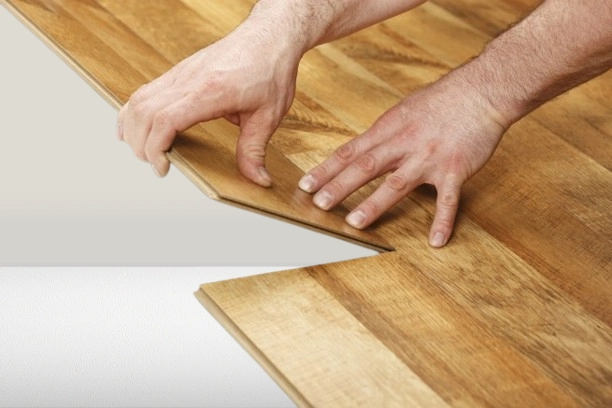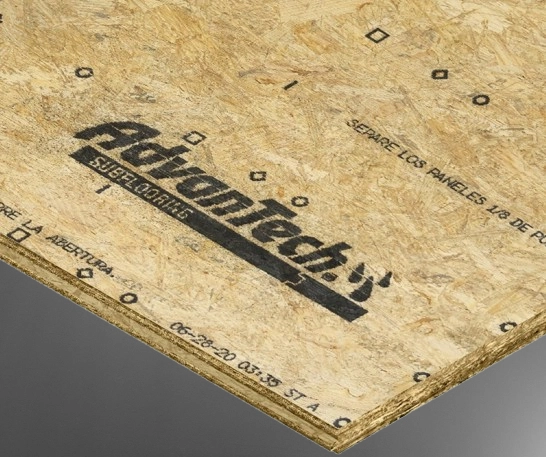Laminate to Tile Transitions

A transition strip is required when combining a tile floor with a laminate floor. The variations in the floor materials are lessened with the use of these strips.
Additionally, they serve as visual clues that indicate the transition between different materials. When it comes to floor transitions, this is frequently seen as normal procedure.
But can you laminate to tile without using a transition strip? We’ll learn more about that in today’s article.
Create a Smooth Transition from Laminate to Tile
Everything is possible in the building industry, as I constantly say. All you have to do is figure out how to get around the obstacles. Without a transition strip, laminate can be applied on tile.
A seamless transition is a common term used to describe this kind of joint. It involves creating a space, ideally 3/8 inch, between the tile and laminate flooring. Next, use a flexible caulk or sealer that matches in color to close that gap.
Please be aware that the tile and laminate floors must be level for this to function. Therefore, self-leveling compounds must be used to compensate for any height discrepancies. If not, you risk creating a trip hazard where the tile and laminate meet.
Selecting a laminate floor that matches or blends in with the tile pattern and color is also essential for this kind of changeover. This ensures a transition that looks well.
Choose a Continuous Floor Instead of a Transition Strip
Some people frequently question why it is necessary to connect a tile floor to a laminate floor without a transition strip, given that this is not typical procedure. Well, there are a few explanations for that, including:
- A smooth transition from tile to laminate flooring is preferred by some. Beauty depends on who is looking at it. For some, the transition pieces are ugly.
Therefore, you have every right to use the previously mentioned way to connect your laminate to tile floors if you fit into this category.
- A minimalist design is maintained by omitting a transition strip. Visual signals known as transition pieces can disrupt a floor’s flow and depart from contemporary minimalism designs.
- This method works well in open-concept areas as well. The absence of a transition strip gives the impression that the area is larger.
- Because there is no obstruction, cleaning a floor without a transition strip is considerably simpler.
- Because there isn’t a transition strip to serve as a trip hazard, this floor plan also has the benefit of preventing accidents.
Possible Drawbacks of a Floor with Transitions
Using a transition strip between tile and laminate is possible, but it can cause a lot of problems.
To make an informed choice about whether or not to utilize it, you must be aware of these issues.
- Disparities in Height
I have previously discussed this. There is typically a variance in height when various floor materials are used.
In addition to being unsightly, the tiles may be higher than the laminate floor, which could become a trip hazard. You must be quite cautious with the height difference if you choose to employ this strategy.
- The edges are more susceptible to harm.
The margins of such a joint are exposed if a transition strip is not used. They are therefore more susceptible to harm.
The margins of the floor will eventually begin to chip if it is frequently subjected to high traffic volumes, necessitating routine maintenance.
- After a while, some floor materials could buckle.
Buckling is another issue that could arise if a transition strip is not used. Over time, laminate flooring is known to expand and contract.
The laminate floor can expand and buckle against the tile floor if there isn’t a strip to hold it on its side.
- The accumulation of dirt
The majority of people typically believe that a transition strip is primarily employed for cosmetic reasons. However, it also keeps debris and grime out of the joint.
- Permeation of Moisture
Moisture will readily seep in if the junction between these two floor materials is left exposed, which might seriously harm both. Mold growth might also result from moisture intrusion.
- It May Reduce the Resale Value of Your House
Make sure you properly install your laminate to the tile floor if you would rather not utilize a transition strip. The resale value of your house may suffer if you don’t. An incomplete appearance is the one thing that buyers detest the most.
Get Rid of Your Warranty Without Using a Strip
Because of the importance of this issue, I have chosen to address it separately. You can disregard the warranty if you combine laminate with tile flooring without a transition strip.
As previously stated, the building industry considers the usage of a transition component to be common procedure.
As a result, when combining laminate flooring with another material, manufacturers mandate the use of a transition piece.
The warranty is immediately nullified if this isn’t done. Therefore, be aware that you are on your own if you choose to use this strategy.
DIY vs. Hiring Professionals
It takes careful installation to provide a smooth transition without a transition strip, and even small mistakes can result in major problems like the ones mentioned above.
Because of this, unless you are extremely skilled at floor installations, I would suggest that you leave such a changeover to the professionals.
A qualified and seasoned contractor will know how to balance the disparity in height. Additionally, you can count on superior craftsmanship, which ensures a more appealing finish. This is not one of those do-it-yourself tasks that you can complete without expertise and careful preparation.
In any case, why are transition strips used?
Here are some of the main applications for a transition strip as you choose whether or not to utilize one in your tile-to-laminate joint:
- To create an eye-catching border between these two flooring materials, a transitional strip is used.
- This strip levels laminate and tile floors when put properly.
- In certain respects, a transitional strip also keeps the joining materials from separating and provide support.
- Local construction codes in several regions of the world mandate the use of transitional strips. As a result, they can help you stay in compliance with local regulations.
- The laminate or tile floor can be readily repaired or replaced with a transitional strip. The strip serves as a natural separating point, which explains why.
- Lastly, transition strips can be coordinated with the tile or laminate floor’s color or pattern. This can greatly improve your floor’s appearance.
Perfect Your Transition-Free Install
You have to give this project your best effort if you’re not going to employ a transition strip. Even if you don’t utilize a transition strip, I’ve compiled a list of helpful pointers below to assist you achieve the ideal junction between tile and laminate.
- Select a laminate floor whose texture, color, and style go in well with the tile floor. This really enhances the finished aesthetic.
- Before installation, thoroughly plan the location. This allows you to recognize variations in height, among other things. Whether or not to employ a self-leveling compound will depend on this.
- Additionally, you must ensure that both materials have adequate space to grow and contract.
- To guarantee a tight fit, you must make accurate cuts when laying the laminate floor.
- Above all, utilize high-quality products at all times. Choose materials from reliable manufacturers for everything from the caulking and sealants to the laminate floor.

